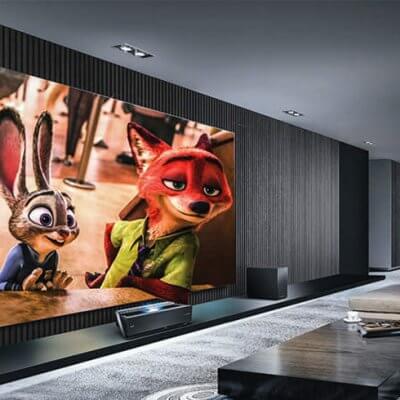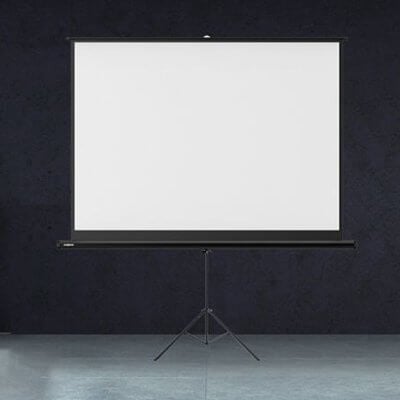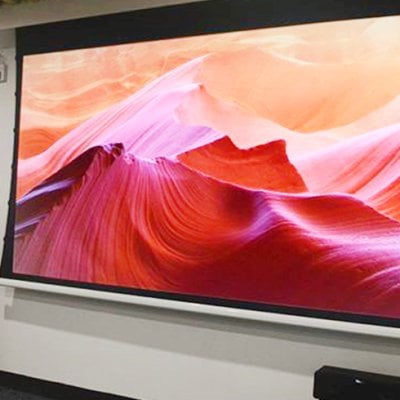A good screen can better deliver the image of your projector. There are 5 key parameters for you to choose a good screen.
Gain
Gain is used to describing the maximum angle from the center of the screen at which you can still see a quality image.
A gain of 1.0 means that the screen reflects all the lights that project on it, while higher numbers mean that the image on the screen is brighter when viewed from straightly ahead but the image suffers if looked at from wider viewing angles.

Higher gain screens perform well in brighter rooms. However, the high-gain screens tend to have a lower viewing angle.
It’s recommended a screen with a gain below 1.0 if your projector doesn’t render blacks very well or a darker room.
Resolution
Resolution is also an important parameter for a screen as the resolution labeled on a projector is only visible for a surface or screen that does not impede the integrity of the pixels.

Therefore, you should pick a quality screen that features absolute flatness and good texture to deliver the sharpness, clarity, and dynamics of a projector.
Color
There are various screens in the market with different colors. The common colors of projector screens are white, gray, and black.

Of the three colors, a white screen is preferred as it fits many kinds of images. A grey screen is suitable for projectors that are frequently used during the daytime, which can deliver an image with high contrast. A black screen tends to be ambient light rejecting screen, which can deliver a good image even under daylight.
Aspect Ratio
Aspect Ratio is the ratio of screen width to screen height. In other words, aspect ratio= screen width/screen height. The preferred and common aspect ratio of a projector is 16:9 or 4:3.

Therefore, you’d better choose a screen with the same aspect ratio as your projector.
Viewing Angles
The viewing angle of a screen is the angle the screen traverses in the viewer’s front vision from the far left of the screen to the far right. The wider the angle, the bigger the screen vision.

Screens with a viewing angle ranging from 30 to 40 degrees are the best. The image will get dimmer and washed out if the angle is too wide. If your room is spacious enough, you can choose a screen with a wider viewing angle.
Related Posts
Projector Buying Guide 2022
Best Projector for Outdoor Movies 2022
3LCD vs LCOS vs DLP Projector: Pros and Cons Introduction
How to Solve Black Spots Problem of Projector Screen?




